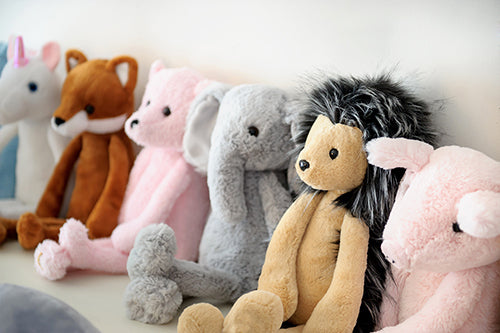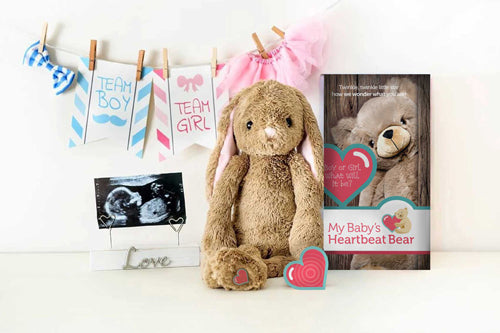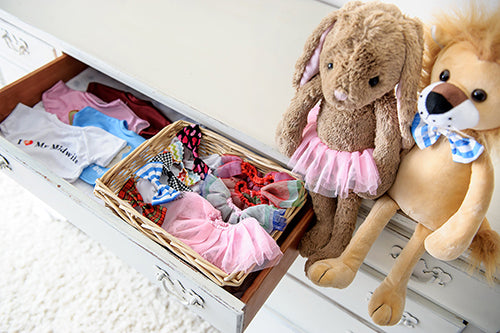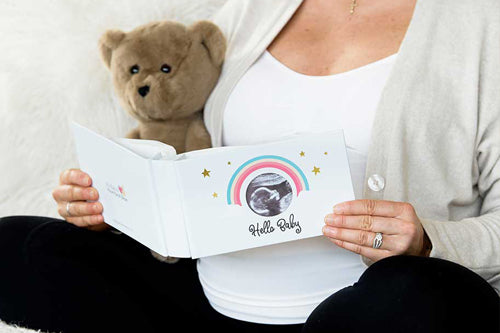Don't Automatically Fear a Fever

YUCK. It’s the time when winter crud starts being passed around with the crayons at the school table. Even the little ones are susceptible. Viruses are everywhere right now, and the warm to cold temperatures outside are not helping.
Seeing your little one feeling crappy is heartbreaking. But instead of stressing over what a thermometer says, take the opportunity to practice skin to skin and snuggle with your baby, toddler, or child. Because the truth is, that unless a temperature reaches 108* (yes one hundred EIGHT degrees) there is no harm in a fever. I’d freak the F out if my kids ever came close to that temperature… In all honesty, I am a worrier at anything over 102*, but I don’t run to the doctor or freak out. I just start my natural interventions at this point. I do however base my interventions on how my child is acting. Before I share my steps to soothing (not snubbing out) a fever, I wanted to educate you on why you should not fear a fever.
Don’t Automatically Fear a Fever
A newborn, infant and baby’s temperature is not categorized as a fever at the same numerical reading as a grown adult, or even a child for that matter.
Did you know that a temperature up to 100.4* is completely normally in an infant under 12 weeks of age? A child over 12 weeks, a toddler, even an adult has not reached a true fever until 104*. Nothing under this (100.4*) for a newborn is even considered an elevated temperature.
According to the American Association of Pediatrics, the normal range of temperature for an infant is between 97-100.4*F. It is important to remember that a fever is not a form of illness. In fact, a fever is typically brought on by the body fighting off an infection (or as a result of an immunization). Because a fever is generally caused by fighting off an infection, this can even be taken as a good sign of a baby’s developing immune system! With a healthy immune system, the fever should break within 48 hours.
*Note: An infant under 12 weeks of age needs to be seen if temperature is above a 100.4, as the immune system is not fully developed yet and should not be raising the body temperature above this point. DO NOT GIVE MEDICATION - ESPECIALLY Tylenol - or any other product containing acetaminophen, as there can be lifelong side effects that occur.
It’s not unusual for children to have very high fevers. In fact, it is generally very helpful for kids to get robust fevers, as it signals a strong immune response which can quickly eliminate pathogens (the bad bugs). A fever isn’t intrinsically dangerous until it reaches 108° F (yikes that is high!), as that is the point at which brain damage can occur. But because you don't want to ever get close to risking brain damage, you'll react to a fever at a much lower degree.
A fever is actually a positive sign. It is evidence that the child has an active immune system. A normal fever does not harm your brain or your body, although it does increase your need for fluids. The best piece of advice you will get is to step away from the thermometer. You will know when your baby is under the weather and feverish. Unless that baby is so hot that your mama bear instincts are screaming at you to run to the ER, then knowing a specific number won’t do anything but cause you anxiety. (And have you rechecking that temperature every 10 minutes!)
Fevers are more frightening than harmful. They are usually a sign that the body is fighting an infection of some kind. According to www.askdrsears.com the top three reasons for a fever in an infant are:
- Viral Infection: The most common cause of fever in children. Roseola, colds, flu, hand-foot-mouth disease, chicken pox, fifth disease, along with many other viruses cause fever. Most viruses are not dangerous. They simply need to run their course over several days. They are not treatable with antibiotics. They are contagious, though, and baby should be kept home until the virus has passed.
- Bacterial Infection: Ear infections, sinus infection, pneumonia, bladder infection, and strep throat are all bacterial infections that cause fever. Antibiotics can be used (or homeopathy and other natural remedies), but a trip to the emergency room is not needed, call your pediatrician in the morning.
- Teething: A fever up to 101*F is common while teething.
American Academy of Pediatrics Does NOT Recommend Fever-Reducing Drugs
The American Academy of Pediatrics (AAP) recognizes that fever is not a disease, but a sign that your body is doing what it's supposed to do to fight infection:
"Fever is not an illness, rather, it is a symptom of sickness and is usually a positive sign that the body is fighting infection."
AAP also does not recommend treating your child with antipyretics (fever-reducing drugs), even with higher temperatures:
"Fevers generally do not need to be treated with medication unless your child is uncomfortable or has a history of febrile convulsions. The fever may be important in helping your child fight the infection. Even higher temperatures are not in themselves dangerous or significant unless your child has a history of seizures or a chronic disease. Even if your child has a history of a fever-related convulsion and you treat the fever with medication, they may still have this kind of seizure … If he is eating and sleeping well and has periods of playfulness, he probably doesn't need any treatment."The Benefits of Fever
When an organism invades your body, it triggers the release of pyrogen, a substance that signals your brain's hypothalamus to raise your body's temperature. This is done through a number of different mechanisms, including:- Shivering
- Release of the hormone TRH
- Increasing your metabolic rate
- Restricting blood flow to the skin to minimize heat loss
- Piloerection (raising the small hairs), which suppresses sweating (sweating is a cooling mechanism)
- Increase in antibodies -- cells trained to specifically attack the exact type of invader that your body is suffering from
- More white blood cells are produced to help fight off the invading bugs
- More interferon, a natural antiviral and anticancer substance, is produced, which helps block the spread of viruses to healthy cells
- Walling off of iron, which bacteria feed on
- Increased temperature, which directly kills microbes (most bacteria and viruses actually grow better at temperatures lower than the human body)
- Improved ability of certain white blood cells to destroy bacteria and infected cells
- Fever also impairs the replication of many bacteria and viruses
Ways to Treat a Fever
When the immune system is weak, or fighting something, it is smart to start supplementing to strengthen it. By adding elderberry, extra vitamin D3, A, and C, probiotics, and including colloidal silver, you can boost the immune system and have it ready to head into battle. If your child is old enough to consume food, is no longer nursing, and is showing signs of illness, most people will recommend you supplement with pedialyte. Before you go grabbing the sugar, preservative, and dye-filled drink, think about making a homemade version instead.
Homemade Pedialyte Recipe: (Source: 100 Days of Real Food)
Mix together:
- 1 quart water
- 2 tablespoons sugar
- 1/2 teaspoon salt
- Skin-to-skin, kangaroo care keeping baby chest to chest with you to help regulate body heat
- Rest: Do NOT wake your child up. Rest is best!
- Give your child plenty to drink to prevent dehydration (not enough fluid in the body) and help the body cool itself. Water, clear soups, and popsicles are. If your child isn’t getting enough fluids, don’t force him to eat if he doesn’t feel like it. (Breastfeed around the clock if possible.)
- Keep your child quiet. Moving around can raise the temperature even more.
- Keep the room temperature between 70°F to 74°F.
- Dress your child in light cotton pajamas so that body heat can escape. Don't over bundle your child. Overdressing can trap body heat and cause your child’s temperature to rise.
- If your child is chilled, put on an extra blanket but remove it when the chills stop
- The Homeopethic Belladona can also be used to aid a sudden high fever.
Things To Remember
- Febrile (fever) seizures can occur at temperatures below this point. Despite the fact that they are unbelievably scary, febrile seizures alone are not a reason to give Tylenol or other fever-reducers. In fact, febrile seizures in otherwise normal children are completely safe.
- Fevers with infections don't cause brain damage. Only body temperatures above 108° F (42° C) can cause brain damage. the body temperature climbs this high only with extreme environmental temperatures (for example, if a child is confined to a closed car in hot weather).
- The fever will normally last for 2 or 3 days until the body turns off the virus's attack and gets the upper hand. This process cannot be hurried. The source of this misconception is that during an infection, when the fever goes away, the child is usually on the road to recovery. It's magical thinking, however, to assume that making the fever go away earlier (which is impossible), will make the infection go away earlier too.
References:
http://articles.mercola.com/sites/articles/archive/2000/12/17/fever-part-one.aspx http://articles.mercola.com/sites/articles/archive/2011/02/03/the-benefits-of-fever.aspx http://www.dailymail.co.uk/health/article-2235092/Fever-childs-friend-New-research-claims-high-temperature-actually-help-children-better.html http://www.jleukbio.org/content/90/5/951.abstract https://www.sciencebasedmedicine.org/fever-phobia/
The content of this website, such as copy, images, graphics and any other material contained on this website ("Content") is for informational purposes only and does not constitute medical advice; the Content is not intended to be a substitute for professional medical advice, diagnosis, or treatment. Always seek the advice of a physician or other qualified health provider with any questions you may have regarding any medical condition. Never disregard professional medical advice or delay in seeking it because of something you have read on this website. In the event of a medical emergency, call your doctor or 911 immediately. This website does not recommend or endorse any specific tests, physicians, procedures, opinions, or other information that may be mentioned on this site. Reliance on any information provided by this website is solely at your own risk.
Featured Articles
5 New Year's Desserts to Make With Kids





















